Land and Waste Management Research Milestones
2020s
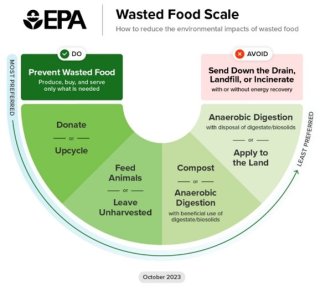
2024-Study of the Environmental Impacts of U.S. Food Waste Management Pathways
The EPA report investigates the environmental impacts and contributions to a circular economy of eleven common pathways to manage wasted food, from source reduction to composting to landfill. The Wasted Food Scale presents a new ranking of the eleven common wasted food pathways, from most to least environmentally preferable.
From Field to Bin: The Environmental Impacts of U.S. Food Waste Management Pathways
2023-Understanding the Environmental Impacts of Food Waste
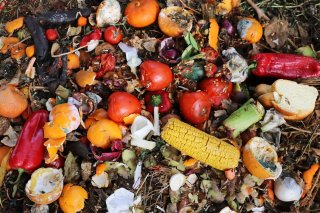
Over one-third of the food produced in the United States is never eaten, wasting the resources used to produce, transport, process, and distribute it – and much of it is sent to landfills, where it breaks down and generates methane, a powerful greenhouse gas. EPA released two new reports quantifying methane emissions from landfilled food waste and updating recommendations for managing wasted food, which provide a better understanding of the net environmental footprint of U.S. food waste and provide the scientific foundation for EPA efforts to reduce it.
2023-Plastics Management Research
EPA researchers used experimental and modeling approaches to evaluate economic strategies for post-consumer plastics, such as polyethylene and polypropylene, that are widely used in packaging and then quickly discarded. Current approaches to produce, use, and dispose of plastics fail to capture the economic benefits of a more 'circular' methods and are harmful to the environment. EPA's study evaluated the current systems and technologies for plastic recycling, life-cycle evidence for eco-efficiency of plastic recycling, environmental impacts, and sustainability issues. This information will be used to determine the technical, infrastructure, economic, and standards barriers for recycling, reuse, and conversion to value-added products that capture the full economic value for sustainable management of plastic materials.
2022- New Ways to Identify Lead Exposure Hotspots
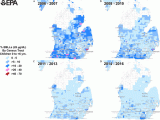
EPA scientists and their colleagues recently concluded a case study in Michigan—a state with robust blood lead level data and established state-federal partnerships—to develop new mapping tools to identify communities with high lead exposure risks.
2022- EPA Researchers Advance PFAS Destruction through PFAS Thermal Treatment Database

EPA released the PFAS Thermal Treatment Database in February 2022. This database provides an online resource that contains more than 2,000 records from 80 different sources about the treatability of PFAS using different thermal processes.
PFAS Thermal Treatment Database (PFASTT)
2022- EPA research gets the lead out!
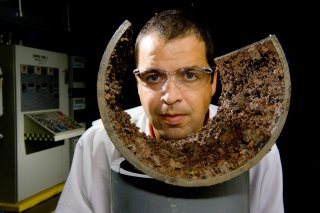
EPA researchers delivered critical research results to advance the Agency's commitment to eliminate lead poising and reduce exposures.
Science Matters Newsletter: EPA Researchers Exploring Innovative Treatment for Lead in Soil
EPA Lead (Pb) Research Recent Highlights
2021 - EPA Develops Community-focused Restoration Website
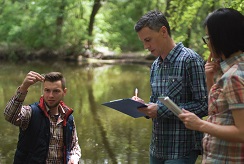
EPA developed a website for those who enjoy Pickle Pond in Superior, Wisconsin to share how they use the pond. The website is part of an effort by our researchers, in collaboration with the state of Wisconsin and BNSF railway to clean up contaminated sediments and restore fish and wildlife habitat at Pickle Pond.
2020 - EPA’s Mapping Tool Protects Groundwater from Contamination
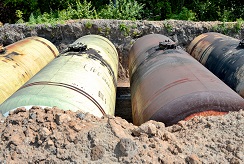
EPA researchers developed the UST Finder, the first-ever national database and web mapping tool for underground storage tanks (UST) to help protect groundwater from potential contamination. The tool provides a comprehensive picture of the physical attributes and locations of active, closed, and known leaking USTs, and related facilities—helping protect local drinking water sources and advancing cleanup, monitoring, and assessment activities.
2010s
2018 – EPA Launches the PVIScreen Model

EPA’s PVIScreen Model helps provide evidence for the occurrence of petroleum vapor intrusion (PVI). PVIScreen automatically conducts an uncertainty analysis, which repeatedly runs the model with differing values of site-specific factors.
2017 - EPA Uses Innovative Techniques to Clean Up Contamination from Soil and Groundwater
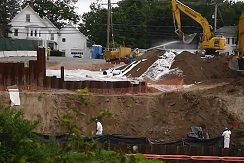
EPA conducts applied research using numerous innovative techniques to clean up contamination from soil and groundwater to protect and restore subsurface environments. Most of these techniques involve speeding up the rates of in-situ chemical reactions and all involve monitoring changes in chemical concentrations at depth. The work is done in cooperation with EPA’s Office of Superfund Remediation and Technology Innovation, other federal partners, and states.
Office of Superfund Remediation and Technology Innovation (OSRTI)
2017 – EPA Provides Guidance on Technology Used for Volatile Organic Compounds
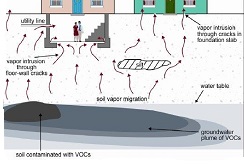
EPA publishes a report that provides guidance for In Situ Chemical Oxidation technology used to remediate contaminated groundwater. The guidance focuses on volatile organic compounds such as perchloroethylene, a chlorinated solvent used in dry cleaner operations.
2017 – EPA Releases a 25-Year Update on Liners Used in Landfills
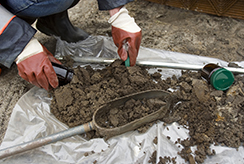
EPA releases a 25-year update on evaluation of performance of hazardous waste systems, quantifying the field performance of engineered containment systems, based on data from hazardous waste landfills (Subtitle C) that are nearing completion of 30 years of post-closure care, and to “ground-truth” expected leachate generation rates and chemistry. The report helps researchers assess and update field performance of Subtitle C landfills.
Post-Closure Performance of Liner Systems at RCRA Subtitle C Landfills
2000s
2000 - EPA Establishes the Ecological Risk Assessment Support Center
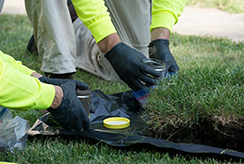
EPA’s Ecological Risk Assessment Support Center provides technical information and addresses scientific questions of concern or interest on topics relevant to ecological risk assessment at hazardous waste sites.
Obtaining Technical Support for Superfund, RCRA and Brownfields Site Issues Fact Sheet
1990s
1998 –EPA Provides Technical Support to the Superfund Program
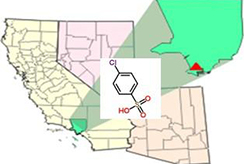
EPA develops Provisional Peer-Reviewed Toxicity Values assessments to support a growing need for toxicity values for the Superfund Program. The Agency also establishes the Superfund Health Risk Technical Support Center to provide human health risk assessment assistance to the program.
EPA's Technical Support Centers
Provisional Peer-Reviewed Toxicity Values (PPRTVs)
1980s
1980 – EPA Grounds the Superfund Program in Science
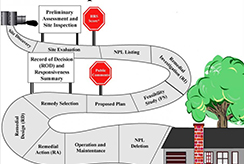
Congress passes legislation authorizing EPA to identify parties responsible for contamination of sites and compel the parties to clean up the sites. EPA science contributes to the implementation of the new Superfund Program created by Congress. The initial program designated $1 billion for cleanup efforts while holding polluters responsible for cleaning up most hazardous waste sites.
Superfund
Superfund Redevelopment Initiative
Summary of the Comprehensive Environmental Response, Compensation, and Liability Act (Superfund)
1970s
1978 – EPA Launches an Unprecedented Response to Hazardous Waste at Love Canal
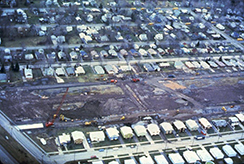
Residents of Love Canal, NY, discover that their community is contaminated by buried leaking chemical containers. The pollution is linked to serious health threats such as cancer and birth defects. President Carter declares an emergency, authorizing EPA to help temporarily relocate about 700 families. EPA researchers conduct the most comprehensive multimedia monitoring study for a hazardous waste site at the time in response to a presidential state of emergency order.
Love Canal Revealed a National Problem; Superfund Provided a Solution
